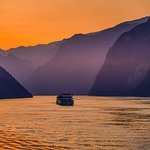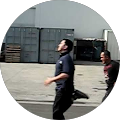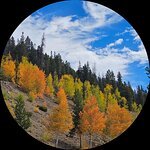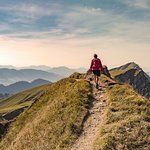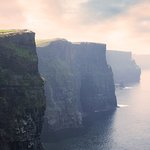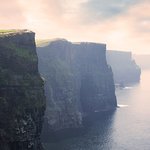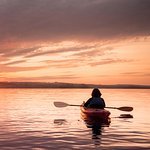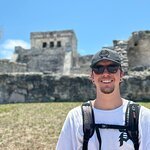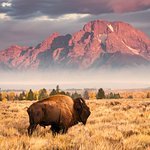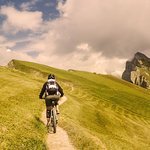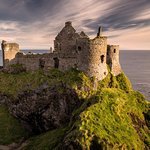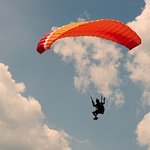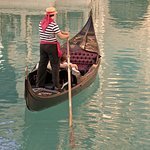DAY 1: MEET IN MENDOZA. Our group will meet in the small, lively city of Mendoza, Argentina, capital of the world-renowned Argentine wine country. The guides will check everyone’s gear and you can pick up any last-minute necessities. We’ll all go out for a sumptuous welcome dinner. Bring your appetite and be prepared to eat some of the best steaks you’ve ever tasted!
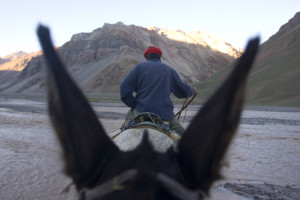 DAY 2: DRIVE TO TRAILHEAD: LAUNCH! We’ll wake up early, drive 2.5 hours to the trailhead at the mouth of the Vacas valley, organize our gear for the “arrieros” (mule drivers) to carry in on our three-day approach to Base Camp, and head on down the trail.. About six hours of hiking through a desert valley (reminiscent of parts of the Grand Canyon) will get us to “Pampas de Lenas,” the first camp on our approach, located at about 9,000′ (2,750 m). We will dine in true gaucho style, with food prepared over an open fire by our arrieros.
DAY 2: DRIVE TO TRAILHEAD: LAUNCH! We’ll wake up early, drive 2.5 hours to the trailhead at the mouth of the Vacas valley, organize our gear for the “arrieros” (mule drivers) to carry in on our three-day approach to Base Camp, and head on down the trail.. About six hours of hiking through a desert valley (reminiscent of parts of the Grand Canyon) will get us to “Pampas de Lenas,” the first camp on our approach, located at about 9,000′ (2,750 m). We will dine in true gaucho style, with food prepared over an open fire by our arrieros.
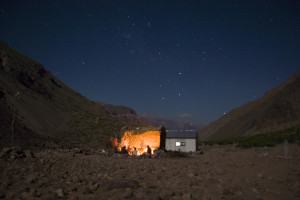 DAY 3: HIKE TO CASA DE PIEDRA. A similar day of hiking with light day packs rewards us with a fantastic view of Aconcagua! We’ll make camp at 10,000′ (3,050 m) at the junction of the Relinchos and Vacas Valleys. An old smuggler’s hut was erected here decades ago, and gives the spot its name, Casa de Piedra (House of Stone). Again, we’ll grill dinner over a fire and enjoy the congeniality of our arriero hosts.
DAY 3: HIKE TO CASA DE PIEDRA. A similar day of hiking with light day packs rewards us with a fantastic view of Aconcagua! We’ll make camp at 10,000′ (3,050 m) at the junction of the Relinchos and Vacas Valleys. An old smuggler’s hut was erected here decades ago, and gives the spot its name, Casa de Piedra (House of Stone). Again, we’ll grill dinner over a fire and enjoy the congeniality of our arriero hosts.
DAY 4: HIKE TO BASE CAMP. An early morning crossing of the Rio Vacas on horseback will deposit us at the mouth of the Relinchos Valley. The trail rises steeply from the mouth of the relatively narrow valley and involves some mildly exposed side-hilling as it climbs up into the broader upper stretches of the Relinchos. We’ll probably need to cross the river at some point, so be prepared for some chilly feet. The 6-7-hour hike culminates at the Plaza Argentina Base Camp, where we can relax with cold beverages and warm hospitality. This is a tougher day than the previous two and as Base Camp is located at 13,800’ (4,200 m), it also involves a lot of elevation gain.
DAY 5: REST/ACCLIMATIZATION DAY. After the altitude gains of the previous day, we’ll give our bodies a chance to adjust to these new heights. We’ll use this day to sort gear and supplies for our push to the upper mountain.
 DAY 6: LOAD CARRYING DAY TO CAMP 1. We’ll load up our personal kits with everything we won’t need for the next couple of days at Base Camp and carry it all up to Camp 1 at 16,300′ (4,970 m). Group gear, food and fuel will already be stocked at Camp 1, so your load should not be in excess of 35 pounds (16 kg), and might be considerably less. The trail ascends along the side of a steep gully next to a dead glacier covered in rocks. Fields of penitents (tall fins of snow formed by wind and solar radiation) line the gully and a 500’- (160 m) high field guards the access to Camp 1. Winding our way through this is a fun, memorable stretch of climbing. Have your camera ready!
DAY 6: LOAD CARRYING DAY TO CAMP 1. We’ll load up our personal kits with everything we won’t need for the next couple of days at Base Camp and carry it all up to Camp 1 at 16,300′ (4,970 m). Group gear, food and fuel will already be stocked at Camp 1, so your load should not be in excess of 35 pounds (16 kg), and might be considerably less. The trail ascends along the side of a steep gully next to a dead glacier covered in rocks. Fields of penitents (tall fins of snow formed by wind and solar radiation) line the gully and a 500’- (160 m) high field guards the access to Camp 1. Winding our way through this is a fun, memorable stretch of climbing. Have your camera ready!
DAY 7: REST/ACCLIMATIZATION DAY AT PLAZA ARGENTINA. We’ve just climbed to 16,300′ in only five days, so we are going to slow things down a bit and allow our bodies to more fully develop a solid foundation of acclimatization.
DAY 8: MOVE UP TO CAMP 1. We’ll pack up the remainder of our personal kits, sleeping bags and tents, and head up to Camp 1. This only takes a few hours so we’ll have plenty of time to fortify our camp sites against the ever-possible “viento blanco,” or white wind, that can plague camps at any elevation from this point upwards.
DAY 9: LOAD CARRYING TO CAMP 2. Again, our food and supplies will mostly be stocked at Camp 2, but we’ll carry up our extra personal kits and gain some acclimatization in the process. Packs should weigh less than 30 pounds (14 kg). The initial hour of hiking is visible from Camp 1 and ascends the broad bowl of scree that comprises the uppermost portion of the Relinchos Valley, and was once buried under the now mostly dead Relinchos Glacier. Above this point, most climbers will bear west toward their High Camp at the base of the Polish Glacier at 19,200′. Opting for the path less traveled, we’ll cut north and follow the beautiful Ameghino Valley, which separates the stunning 19,616′ Cerro Ameghino (5,978 m) from its taller counterpart, Aconcagua. Easy hiking and one “glacier” crossing will quickly put us at Camp 2 just shy of 18,000’ (5,480 m).
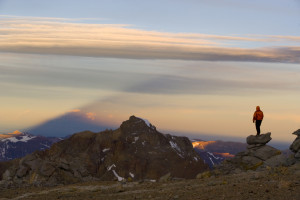
DAY 10: MOVE UP TO CAMP 2 (HELICOPTER CAMP). The views here are staggering! The summit of Cerro Ameghino is just to our east, and to the north we can see the 22,000′ (6,700 m) Cerro Mercedario dominating the horizon. The array of peaks above the Gussfeldt Glacier are pretty inspiring. This move only takes a few hours, so we can take our time and make certain that camp is fully fortified and still enjoy the evening light, when Ameghino is bathed in alpenglow. The camp name comes from the bits and pieces of a crashed helicopter, which still adorn the camp more than a dozen years after the crash.
DAY 11: REST/ACCLIMATIZATION DAY AT CAMP 2. We might make a load carry to High Camp, which is an easy and quick 2.5-hour hike with light packs.
DAY 12: MOVE TO HIGH CAMP AT PIEDRAS BLANCAS (WHITE ROCKS). We climb steeply out of Camp 2 and then ascend gradually up to a shallow basin filled with bizarre purple and white rocks. Weaving through the rocks makes for some surreal hiking. At the top of the basin, perched on the north ridge of Aconcagua, is our High Camp.
DAY 13: SUMMIT DAY! A pre-dawn start is necessary for this, the longest day of our trip. We’ll work our way up toward the summit, past the wreckage of the old “Independencia Hut,” to a rising traverse that leads into the broad gully known as the “Canaleta.” Depending on conditions, ice axes, crampons and ropes might be necessary along the traverse. Above the Canaleta we’ll skirt along the south ridge, with views down the tremendous South Face of the mountain to the final rocky steps up to the summit! Save some energy for the descent, keeping in mind that the summit is only halfway today. Round-trip time can take anywhere from 7-12 hours, depending on conditions. This is a tough, long day.
DAY 14-16: CONTINGENCY DAYS. These are extra days built into the schedule for additional acclimatization, weather or other delays. You have come a long way and put a lot of energy toward a summit attempt. This extra time is designed to set yourself up for success.
DAY 17: DESCEND TO PLAZA DE MULAS. After a well-deserved night’s sleep, we’ll break camp, load up, and drop down the Normal Route to the Plaza de Mulas Base Camp. The typically huge loads will be minimized by our employment of porters to help carry our kit down to Plaza de Mulas. With 30-pound packs, the descent only takes a few hours. Plaza de Mulas is a veritable tent city with restaurants, taverns, and satellite phone and Internet service. There’s even a hotel on the far side of the valley! We’ll have a celebratory meal in a kitchen tent, seated at tables, and sleep deeply in the relatively thick air of 14,000′ (4,260 m).
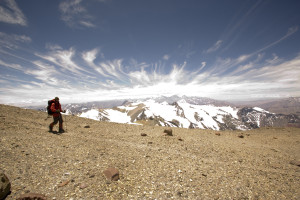 DAY 18: HIKE OUT THE HORCONES VALLEY/BACK TO MENDOZA. The hike out the Horcones Valley goes relatively quickly as it’s mostly a gradual descent and we only have our daypacks to carry. Mules will carry out the majority of our kit. The valley is huge and fascinating, both aesthetically as well as geologically. About 5 hours into our hike, we’ll stop at the Confluencia Camp for a nice lunch break (pizzas!). At the mouth of the valley we’ll check out with the park rangers and the team can choose to either stay in Penitentes or return to Mendoza.
DAY 18: HIKE OUT THE HORCONES VALLEY/BACK TO MENDOZA. The hike out the Horcones Valley goes relatively quickly as it’s mostly a gradual descent and we only have our daypacks to carry. Mules will carry out the majority of our kit. The valley is huge and fascinating, both aesthetically as well as geologically. About 5 hours into our hike, we’ll stop at the Confluencia Camp for a nice lunch break (pizzas!). At the mouth of the valley we’ll check out with the park rangers and the team can choose to either stay in Penitentes or return to Mendoza.
Day 19: FLY HOME. It’s worth taking some time to explore the area, but if you need to get home, today is your fly home day. If you have a bit of time, touring some of the local vineyards gives an insight into the passion with which Mendocinos apply to their wine making. There is also some good whitewater rafting, or just take in the sights and sounds of this beautiful city.
Please note: As with any itinerary for an expedition in the mountains, there are many, many factors which could cause us to stray from this schedule. Flexibility is a crucial character trait in a good mountaineer!










 DAY 2: DRIVE TO TRAILHEAD: LAUNCH! We’ll wake up early, drive 2.5 hours to the trailhead at the mouth of the Vacas valley, organize our gear for the “arrieros” (mule drivers) to carry in on our three-day approach to Base Camp, and head on down the trail.. About six hours of hiking through a desert valley (reminiscent of parts of the Grand Canyon) will get us to “Pampas de Lenas,” the first camp on our approach, located at about 9,000′ (2,750 m). We will dine in true gaucho style, with food prepared over an open fire by our arrieros.
DAY 2: DRIVE TO TRAILHEAD: LAUNCH! We’ll wake up early, drive 2.5 hours to the trailhead at the mouth of the Vacas valley, organize our gear for the “arrieros” (mule drivers) to carry in on our three-day approach to Base Camp, and head on down the trail.. About six hours of hiking through a desert valley (reminiscent of parts of the Grand Canyon) will get us to “Pampas de Lenas,” the first camp on our approach, located at about 9,000′ (2,750 m). We will dine in true gaucho style, with food prepared over an open fire by our arrieros. DAY 3: HIKE TO CASA DE PIEDRA. A similar day of hiking with light day packs rewards us with a fantastic view of Aconcagua! We’ll make camp at 10,000′ (3,050 m) at the junction of the Relinchos and Vacas Valleys. An old smuggler’s hut was erected here decades ago, and gives the spot its name, Casa de Piedra (House of Stone). Again, we’ll grill dinner over a fire and enjoy the congeniality of our arriero hosts.
DAY 3: HIKE TO CASA DE PIEDRA. A similar day of hiking with light day packs rewards us with a fantastic view of Aconcagua! We’ll make camp at 10,000′ (3,050 m) at the junction of the Relinchos and Vacas Valleys. An old smuggler’s hut was erected here decades ago, and gives the spot its name, Casa de Piedra (House of Stone). Again, we’ll grill dinner over a fire and enjoy the congeniality of our arriero hosts. DAY 6: LOAD CARRYING DAY TO CAMP 1. We’ll load up our personal kits with everything we won’t need for the next couple of days at Base Camp and carry it all up to Camp 1 at 16,300′ (4,970 m). Group gear, food and fuel will already be stocked at Camp 1, so your load should not be in excess of 35 pounds (16 kg), and might be considerably less. The trail ascends along the side of a steep gully next to a dead glacier covered in rocks. Fields of penitents (tall fins of snow formed by wind and solar radiation) line the gully and a 500’- (160 m) high field guards the access to Camp 1. Winding our way through this is a fun, memorable stretch of climbing. Have your camera ready!
DAY 6: LOAD CARRYING DAY TO CAMP 1. We’ll load up our personal kits with everything we won’t need for the next couple of days at Base Camp and carry it all up to Camp 1 at 16,300′ (4,970 m). Group gear, food and fuel will already be stocked at Camp 1, so your load should not be in excess of 35 pounds (16 kg), and might be considerably less. The trail ascends along the side of a steep gully next to a dead glacier covered in rocks. Fields of penitents (tall fins of snow formed by wind and solar radiation) line the gully and a 500’- (160 m) high field guards the access to Camp 1. Winding our way through this is a fun, memorable stretch of climbing. Have your camera ready!
 DAY 18: HIKE OUT THE HORCONES VALLEY/BACK TO MENDOZA. The hike out the Horcones Valley goes relatively quickly as it’s mostly a gradual descent and we only have our daypacks to carry. Mules will carry out the majority of our kit. The valley is huge and fascinating, both aesthetically as well as geologically. About 5 hours into our hike, we’ll stop at the Confluencia Camp for a nice lunch break (pizzas!). At the mouth of the valley we’ll check out with the park rangers and the team can choose to either stay in Penitentes or return to Mendoza.
DAY 18: HIKE OUT THE HORCONES VALLEY/BACK TO MENDOZA. The hike out the Horcones Valley goes relatively quickly as it’s mostly a gradual descent and we only have our daypacks to carry. Mules will carry out the majority of our kit. The valley is huge and fascinating, both aesthetically as well as geologically. About 5 hours into our hike, we’ll stop at the Confluencia Camp for a nice lunch break (pizzas!). At the mouth of the valley we’ll check out with the park rangers and the team can choose to either stay in Penitentes or return to Mendoza.

